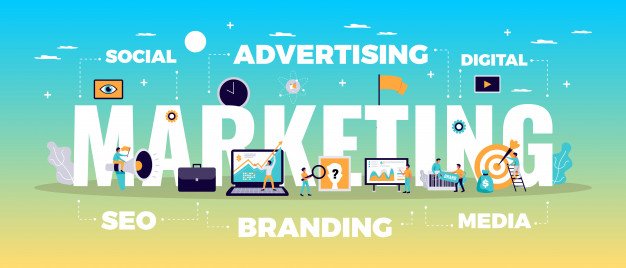Content marketing has been around for quite a long time, and it is the go-to marketing strategy for many businesses nowadays. But everybody uses it, and the results they get are more or less along the same lines…in terms of the time they take to materialize.
What if you’re looking to get better results from your content marketing endeavors? What if you want to do some smart work rather than hard work?
In this post, let’s take a look at some answers to this question.
Contents
What Is Content Marketing?
Content marketing is basically defined as the type of marketing that involves creating and publishing/distributing content to a certain audience. The purpose of distributing this type of content is to increase awareness of the product/services so that they can be sold more. While “content,” in this context, refers to the content of all types, mostly written stuff is utilized for marketing purposes.
This type of marketing takes different shapes and forms.
Some people can engage in content marketing by writing and publishing blogs regularly. Others can utilize their product pages as a medium to engage in marketing, i.e., by making the descriptions and the visuals, etc., appealing and attractive.
Actually, instead of mentioning them here somewhat haphazardly, let’s look at some of the content marketing methods in detail before moving on to the tips.
What Are Some Common Methods Of Content Marketing?

Here are a few of the common ways in which content marketing is employed.
- Blogs: The main purpose of blogs is not to promote a certain product or service. Rather, it is to educate readers so that the overall readership and audience of a brand grows. This increased audience and readership then automatically get attracted to the brand itself after consuming the helpful content it puts out. This ultimately means more business for the brand.
- Emails: Email marketing is technically a marketing strategy on its own, but since it almost always utilizes content of some sort, it can also be mentioned in content marketing. In an email marketing campaign, individuals are reached out separately by the brand. These emails can either inform the recipient about some sort of new product release, a sale or a special discount, etc.
- Newsletters: Newsletters are technically emails, but they are not like other messages that are typically used and sent in an email marketing campaign. While the latter, for the most part, directly promote the offerings of a brand, newsletters are geared toward educating the readers. You can think about them to be a type of hybrid between a blog and a typical email marketing message.
- E-books: While this one is a more elaborate step than what brands usually do, it is a good way to engage in content marketing.
Now, with all that out of the way, let’s take a look at some tips that you can follow to get better results from your content marketing endeavors.
Tips For Getting Better Results From Content Marketing
As we mentioned earlier, while content of all types can be employed in content marketing, written content is the most common…and perhaps the toughest to create. That is why our tips will be geared towards it in particular.
Don’t Write Like A Robot, And Don’t Write For Robots
In that rather wordsmith-is line, we’ve summed up one of the most important principles of writing online content.
Firstly, when you write content for marketing purposes, be it of whatever type and kind, you should make sure that your tone is friendly, communicative, and human-like. Mind you, there are exceptional cases where a totally opposite tone would be more suitable, but we are talking about the common cases here.
This is what we mean by not writing like a robot.
Here is what you can do to make your writing tone fall into this criterion. Of course, depending on the situation at hand, some of these tips may not be very applicable.
- Try and refer to the reader as “you” and yourself as “I” or “we.” This is one of the basic and simplest ways to make your tone look more natural and human-like.
- Since you have to make your written content look more like a conversation than a piece of written text, you should reduce your overall use of passive voice. People hardly use passive voice when they speak. I mean, I could have just said, “The passive voice is hardly used by people when they speak,” but I did just make my point.
- Keep sentences short. Keeping your sentences short can also give a natural touch to your writing and make it more reader-friendly.
The second part of our tip was Don’t write for robots.
We should actually clear this up a little before moving on.
Nowadays, a lot of content marketing is done via search engines. When people write blogs, they channel them to their readers via search engines. The same goes for a lot of other types of content, like product descriptions and e-books, etc.
Now, in a bid to make their content look nice to the search engines, a lot of people can end up making it look too mechanical, erratic, and awkward for human taste.
Consider the following example:
We offer the best ramen in Tokyo. Our quality ramen store in Tokyo is very good. Buy quality ramen near me in Tokyo. (Note the atrocious keyword usage)
Good content? For the search engine, maybe. For the reader? It’s just gibberish.
You have to avoid doing this sort of stuff when writing content for your audience. You should strike a balance between making the content appealing for SEs as well as your human readers.
Do Proper Research…And Use It
When it comes to content marketing materials such as blogs and newsletters, your aim should be to provide reliable and educative content to your audience. This can only be done if you do proper research and then utilize it when writing the content itself.
In this part, let’s look at how you can do research properly and what benefits you can get from it.
Here are some things that you can do for effective research:
- Look for popular and reliable sources on the internet. Before you start gleaning information from anywhere, you should establish its reliability first.
- Once done, be sure to find out relevant facts and figures to add to your content. This tip is, of course, subjective. In some types of content, adding facts and figures may not be very suitable. However, it can be a good idea in things like blog posts, emails, and the like.
- If you find yourself in a situation where you have to use some material from a source verbatim in its actual form.
(More important than implementing theoretical and conceptual information is the utilization of the data you get from audience research. In other words, you should conduct audience research and then use the details that you find to adjust your content as per the needs of the audience. When we say “audience research,” we basically refer to using analytical tools to find out necessary information and details about your audience, such as the details about their age, gender, location, and so on.)
Now let’s look at what benefits you can get by doing and incorporating research into your work.
- Authority: When your content is backed with research, it comes off as authoritative. For example, when you present a stat for a certain situation or occurrence, it looks more grounded as compared to an opinionated guess.
- Up-to-date information: Conducting research can also get you in touch with up-to-date information. By not researching your material before writing it, you can get stuck with old, outdated information that can neither help you nor your readers.
- Value: When your content is based on research, it provides value to your readers. For problems, it can provide solutions. For choices, it can provide expert opinions.
This sort of content is a lot more potent in building a better readership and for growing your brand.
Aim For Content Perfection
Perfection is not attainable, but if we chase perfection, we can catch excellence.
- Vince Lombardi
It’s a bit of a dramatic way to start off this heading, but it does make the point that we want.
No content is perfect because perfection (least of all in written content) is not achievable. But if you aim for the bullseye, you can land somewhere close to it.
That is why you should make all the effort possible to remove all types of imperfections from your content.
- Grammar errors: Grammar errors are by far the most common and most harmful errors that you can make in your content. You should be proactive about avoiding such errors during the writing phase. And once you do write the content, you should take steps like proofreading the content and using an online grammar checker to weed out the remaining ones.
- Clunky readability issues: Readability issues, such as confusing words, long-winded sentences, and weird phrase choices, can also adversely affect the quality of content. you can remove these types of imperfections from your content by using an online AI-driven paraphrasing tool. A good AI paraphraser can improve the readability of the provided content during the rephrasing process.
- Plagiarism: Plagiarism is like the diamondback of content imperfections. You can’t spot it quickly enough, and it can kill the quality of your write-up without you realizing it. Removing this imperfection is necessary and tricky at the same time. The best way to go about it is to use an online plagiarism checker and then analyze the results to take the steps you need.
Conclusion
A lot of brands do content marketing nowadays. But, to bring yourself a cut above the others, you have to follow some best practices. We’ve outlined a few of those in the post above.
Read Also :























